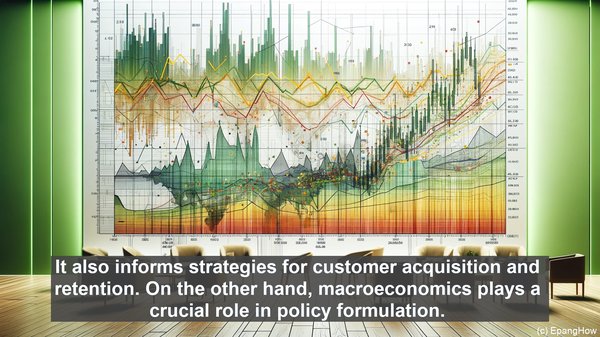Introduction: The Dual Perspectives of Banking
Greetings, everyone! Banking, as a field, is a complex ecosystem that can be examined from multiple angles. Today, we’ll be zooming in on two such perspectives: microeconomics and macroeconomics. While both deal with the financial realm, they differ significantly in terms of scale, scope, and objectives. Let’s dive in!
Microeconomics: The Fine Details of Banking
Microeconomics, as the name suggests, focuses on the smaller, more granular aspects of banking. It zooms in on individual entities, such as households, firms, and banks themselves. Key areas of microeconomic analysis in banking include supply and demand for loans, interest rates, and the behavior of individual market participants. By examining these factors, microeconomics helps us understand how decisions made by individual actors impact the overall functioning of the banking system.
Macroeconomics: The Big Picture of Banking
In contrast, macroeconomics takes a broader view, analyzing the entire banking system as a whole. It looks at aggregate variables, such as the overall money supply, inflation rates, and the role of central banks. Macroeconomic analysis in banking seeks to understand the interplay between different sectors of the economy, the impact of government policies, and the overall stability of the financial system. It’s like looking at a puzzle from a distance, trying to grasp the larger patterns and dynamics.

Methodologies: From Case Studies to National Data
The methodologies employed in microeconomics and macroeconomics also differ. Microeconomics often relies on case studies, surveys, and statistical analysis of individual data sets. Researchers might examine the lending patterns of a specific bank or conduct surveys to gauge consumer sentiment. In contrast, macroeconomics relies heavily on national-level data, such as GDP figures, employment rates, and trade balances. These data points provide a bird’s-eye view of the economy, allowing for the identification of trends and patterns at a broader level.
Impacts on the Banking Industry: From Risk Assessment to Policy Formulation
Both microeconomics and macroeconomics have tangible impacts on the banking industry. Microeconomics, with its focus on individual behavior and market dynamics, helps banks assess risks associated with lending, pricing, and investment decisions. It also informs strategies for customer acquisition and retention. On the other hand, macroeconomics plays a crucial role in policy formulation. Central banks, for example, rely on macroeconomic indicators to set interest rates and implement monetary policies that can stabilize the economy and ensure the smooth functioning of the banking system.

